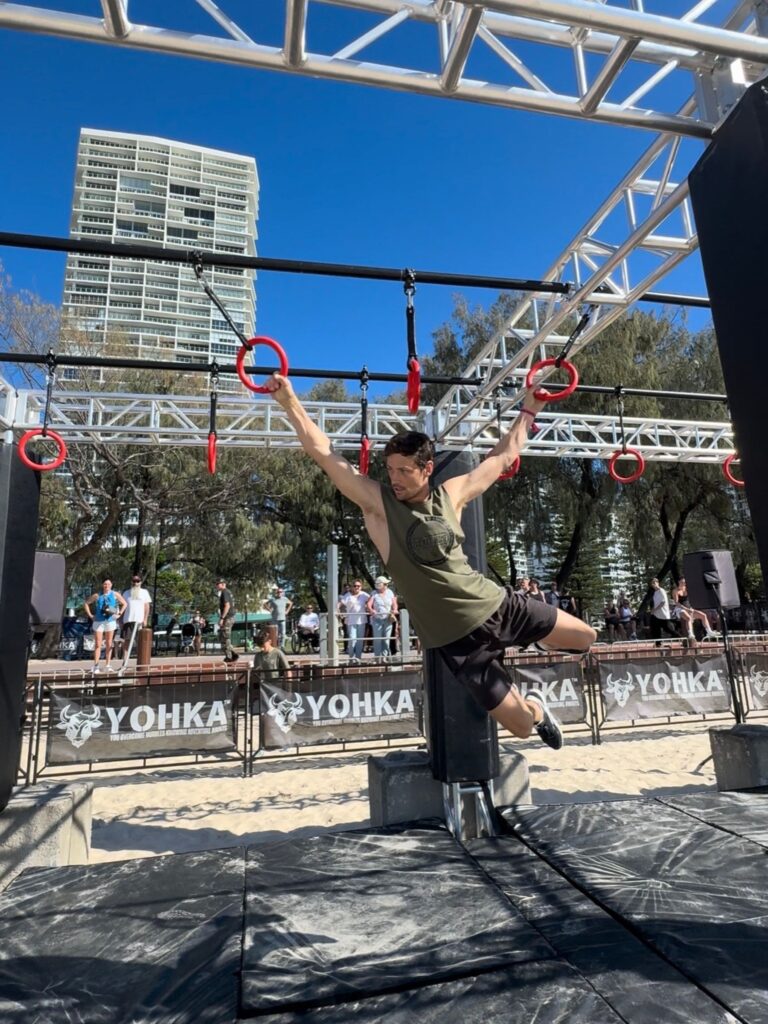AUSTRALIANS HAVE ALWAYS loved running. In fact, data from Sport Australia shows that more than three million of us are recreational runners, making it one of the most popular pastimes in Australia. But it’s doubtful they’ve ever loved running as much as they do right now.
Lately it feels like every sleepy Saturday morning social media scroll is interrupted by feed-filling stories live on the scene of a picturesque early run with their local club. Immediately, you’re confronted with the realisation that while you’re yet to leave the comfort of your bed, your annoying friends and mutuals are out making the best of their day and hitting their fitness goals in the process.
Such is the nature of society’s deeply ingrained herd mentality that an uptick in participation in any activity has a multiplying effect. People try something out and post about it online. More people see it, try it out for themselves and post about it. On and on the cycle goes until a trend has reached its pinnacle, at which point it becomes “too mainstream” and we all lose interest and pretend we were never so enthralled by a now played-out farce.
Running clubs are yet to reach the point of becoming too mainstream. Clubs continue to collect members and induct new acolytes at impressive rates. In all likelihood, if you’re not already one of those stalwart members, you’re considering becoming one. Why else would you be reading this?
If you’re keen on joining a running club, there are a few things you should know, and you likely have a few questions. Luckily, we’ve compiled everything you need to know before you join, so you know what to expect.
How do running clubs work?
The principle is fairly straightforward, right? A bunch of people meet up at a predetermined location at a predetermined time and run for a predetermined distance. But how does that actually work in practice? While the parameters of each individual running club will differ—with some focusing on training and others on socialising—they are united in their belief that, when it comes to working out, a community is stronger than an individual.
Most running clubs are organised through social media—although there are some exceptions to this rule, as golden oldies groups likely communicate through different means. Some will have a regular routine, such as meeting at 6am on Saturdays in a regular spot. Others use more dynamic scheduling, updating their members on a chosen location and time throughout the week.
Smaller running clubs may be less organised. In some instances, the plan will be to just meet up and run. Larger clubs, however, have meticulously mapped out routes and set off in waves of fragmented groups in order of ability and speed.
How do you join a running club?
Running clubs are not some cult-like Masonic order, whereby you must be nominated by an existing member and go through a lengthy initiation process to join. Some larger clubs do require a membership and you’ll have to pay fees to join, but others will often share their planned meet-ups with the public on social media, so all you really need to do is show up and join in. Small-scale groups may require permission from an organiser to join. It could also help if you know someone in the loop to get the ball rolling.

INSTAGRAM | @the_440
What are the benefits of joining a running club?
As anyone who’s ever put off a run or a trip to the gym will know, finding motivation to exercise is a lot easier when you have someone holding you accountable. That’s the line of thinking that governs most running clubs. By exercising in a group and facing shared challenges you’re more likely to show up, stick to a regular workout routine and push yourself to be better.
The effectiveness of working out in groups is well documented. One study found that 95 percent of people who started a weight-loss program in a group completed the program, compared to a 76 per cent completion rate for solo operators. Another study found that not only are group workouts better at improving quality of life than individual workouts, they are also better at reducing stress.
In addition to the motivational benefits, running as part of a club is also a lot safer than doing it alone, especially if you prefer to get a sweat on in the early hours of the morning or late at night. Running alongside others can also improve your ability, as you’ll likely land a few pointers on form, pacing and gear along the way.
Can you join a running club as a beginner?
Larger running clubs are all about versatility. It would be unreasonable to expect a group of 100+ people to all keep to the same pace, so most running clubs split off into different pace groups. More advanced runners might join the five minutes per kilometre pace group, whereas newcomers can stick to the six minutes per kilometre group. That way, runners of all skill and experience levels can join in on the action without feeling like they’re taking it easy or over-exerting.
What should you wear to a running club?
Exactly what you would wear on a solo run. There isn’t really a dress code for most running clubs, and if there is, its only requirement would likely be to slap the club’s logo across your chest. Opt for some breathable, flexible clothing and your trustiest running shoes.

Forrest Gump
Best running clubs in Sydney

INSTAGRAM | @unofficialrunclub
440 Run Club
Where: Bronte Beach
When: Saturdays, 5am
Instagram: @the_440
Unofficial Run Club
Where: Milson’s Point
When: Fridays, 6am
Instagram: @unofficialrunclub
Pace Yourself Run Club
Where: Centennial Park
When: Saturdays, 8am
Instagram: @paceyourselfrunclub
Best running clubs in Melbourne

INSTAGRAM | @am.pm.rc
Parkrun
Where: Multiple locations across Melbourne
When: Saturdays, 8am
Instagram: @parkrunau
AM:PM.RC
Where: The Tan track, Princes Park and multiple locations across Melbourne
When: Tuesdays, 6:45pm. Thursdays, 6:30am. Saturdays/Sundays, multiple times.
Instagram: @am.pm.rc
Tanaka Running Club
Where: Carlton
When: Wednesdays, 6:30am. Sundays, 7:30am.
Best running clubs in Brisbane
South Bank Runners
Where: South Brisbane
When: Tuesdays, 6pm. Thursdays, 6pm.
Instagram: @southbankrunners
Unfit Run Club
Where: All over Brisbane
When: Irregular meetings, usually at least once per week.
Instagram: @unfitrunning
Best running clubs in Perth
440 Run Club Cottesloe
Where: Cottesloe
When: Saturdays, 6am
Instagram: @the_440_cottesloe
The Early Ones
Where: Scarborough
When: Irregular, but typically Sundays between 7am-8am.
Instagram: @theearlyones_

Related:















